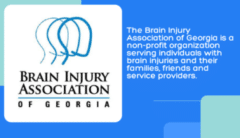| Have you ever felt like stroke recovery is stuck in the stone age?
Things like pegboards are far outdated — and honestly quite slow and boring — yet they’re still widely used.
And unfortunately, outdated rehab costs you time and energy. Not good. Especially during recovery.
That’s why we’re going to share two extremely important concepts for faster recovery from stroke: neuroplasticity and repetitive practice.
These two things can make a MASSIVE difference in your recovery, so we’d like to share a quick lesson about it with you.
Neuroplasticity is the BEST way to boost stroke recovery.
Neuroplasticity is how your brain rewires itself and heals after stroke. When there is damage in the brain, neuroplasticity allows your brain to rewire new connections around the damage.
For example, if stroke damaged the motor cortex of your brain (which controls movement) then you may have impaired leg movement. In order to regain leg movement, you can engage neuroplasticity to rewire your brain.
Which begs the question, how can you engage neuroplasticity?
The answer is repetitive practice.
Repetitive practice involves practicing something over and over and over, which leads to stroke rehab success! |

